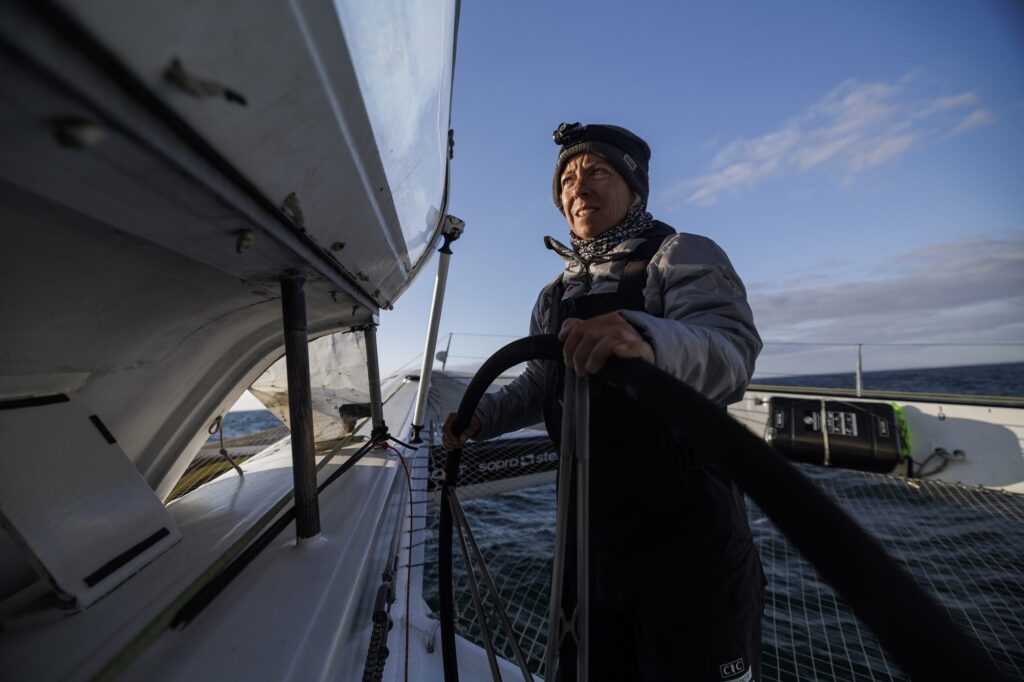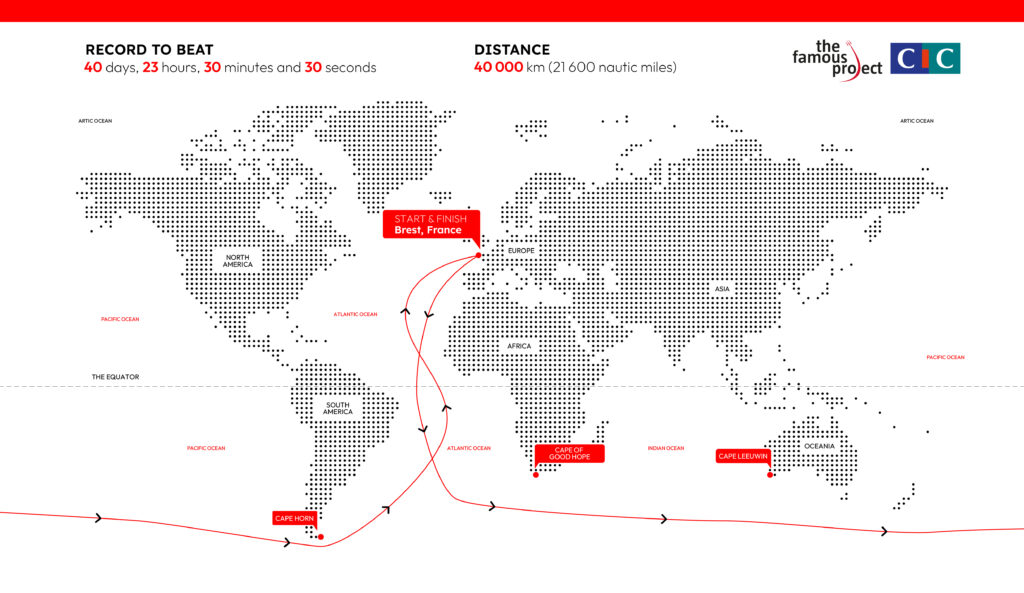On standby since Monday, November 17, the all-female crew led by Alexia Barrier has triggered the green code and is preparing to set sail on this non-stop, unassisted round-the-world race within the next 48 hours aboard the maxi-trimaran… Attempting to achieve this feat as a woman !
The goal: to cross the Jules Verne Trophy starting line, drawn between the Créac’h lighthouse on the island of Ushant and the Lizard Point lighthouse at the western tip of Cornwall, aboard the IDEC SPORT maxi-trimaran on Saturday afternoon, November 29.

A weather window is opening up over the nearby Atlantic this weekend, and the IDEC SPORT maxi-trimaran will leave the pontoon at the port of Brest (Quai du Commandant Malbert) on Saturday morning between 11 a.m. and noon.
The long preparation is coming to an end, and it is with enthusiasm, mutual confidence, and excitement that the eight sailors will attempt to beat the breathtaking time set in 2017 by Francis Joyon and his five crew members aboard the same legendary IDEC SPORT trimaran: 40 days and 23 hours. Above all, they aim to “close the loop” and become the first all-female crew to achieve this feat.

Crossing the starting line on Saturday afternoon!
“There is no such thing as ideal weather conditions,” Alexia Barrier repeats over and over, supported in this view by Christian Dumard, the shore-based router. Choosing a departure time inevitably involves compromising between wind, sea conditions, and the alignment of short-, medium-, and long-term weather systems. The space offered this Saturday by the circulation of two anticyclones over the nearby Atlantic encourages a start, with an immediate race against time and against the movement of a high-pressure area capable of closing the door off Cape Finisterre.
“The front will pass over the starting area on Saturday morning,” explains Christian Dumard, a weather specialist who is extremely vigilant about the evolution of air masses. “The idea is to leave just behind it, in the early afternoon, in a northwesterly flow of less than 30 knots, which will gradually weaken. This window is very short and does not necessarily offer a guaranteed chance of achieving a fantastic time at the equator. But it does offer favorable wind and sea conditions for downwind sailing and a relatively comfortable start for the crew.“

Setting sail downwind in rough seas…
This is what Alexia and her seven female crew members want, as they refuse to get off to a bad start. “We’ll leave Brest on Saturday before noon and cross the line about two hours later. The sea will be rough, with waves over 4 meters high, but perfectly manageable aboard IDEC SPORT. The danger is that the high-pressure system centered off the coast of Portugal will grow and block our passage around Cape Finisterre. If that happens, we will have to turn back and resume our standby in Brest. This is a scenario that the eight women of The Famous Project CIC do not even consider, as the desire to succeed is clear on their faces. “All the teams, both at sea and on land, are more motivated than ever to make this departure a success and finally embark on the wonderful adventure that awaits us…”

The Jules Verne Trophy route
- Cross the starting line defined by a line connecting the Créac’h lighthouse on the island of Ushant and the Lizard Point lighthouse.
- Sail around the world, passing Cape of Good Hope, Cape Leeuwin, and Cape Horn on the port side.
- Recross the line defined above in the opposite direction.

How to follow The Famous Project CIC’s record attempt?
- Download the official The Famous Project CIC app on iOS and Android.
- The Famous Project CIC map: https://thefamousproject.io/mapster-wp-map/tracking-theboat/
- Website: idecsport.com
- IDEC SPORT social media: LinkedIn, Instagram, Facebook
- Daily LIVE updates from on board via the YouTube channel

